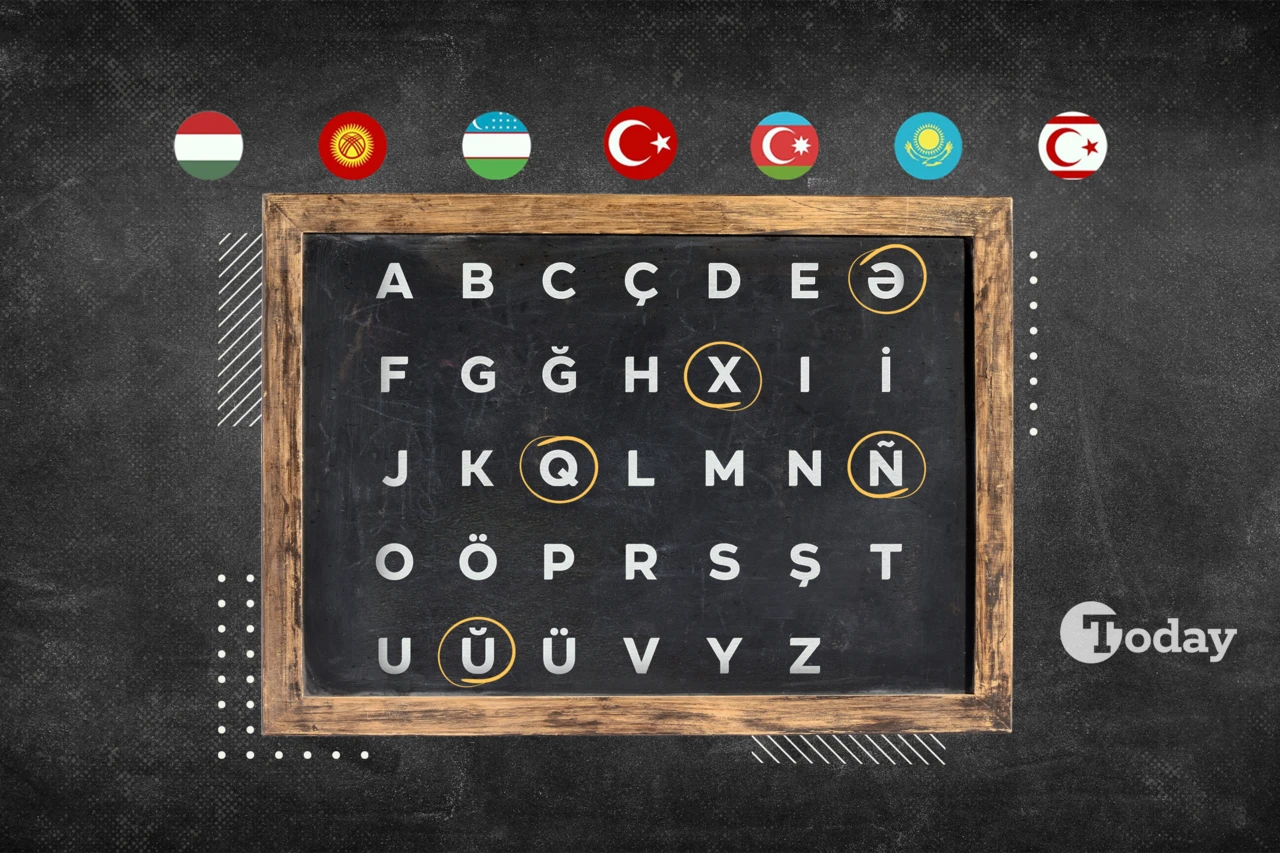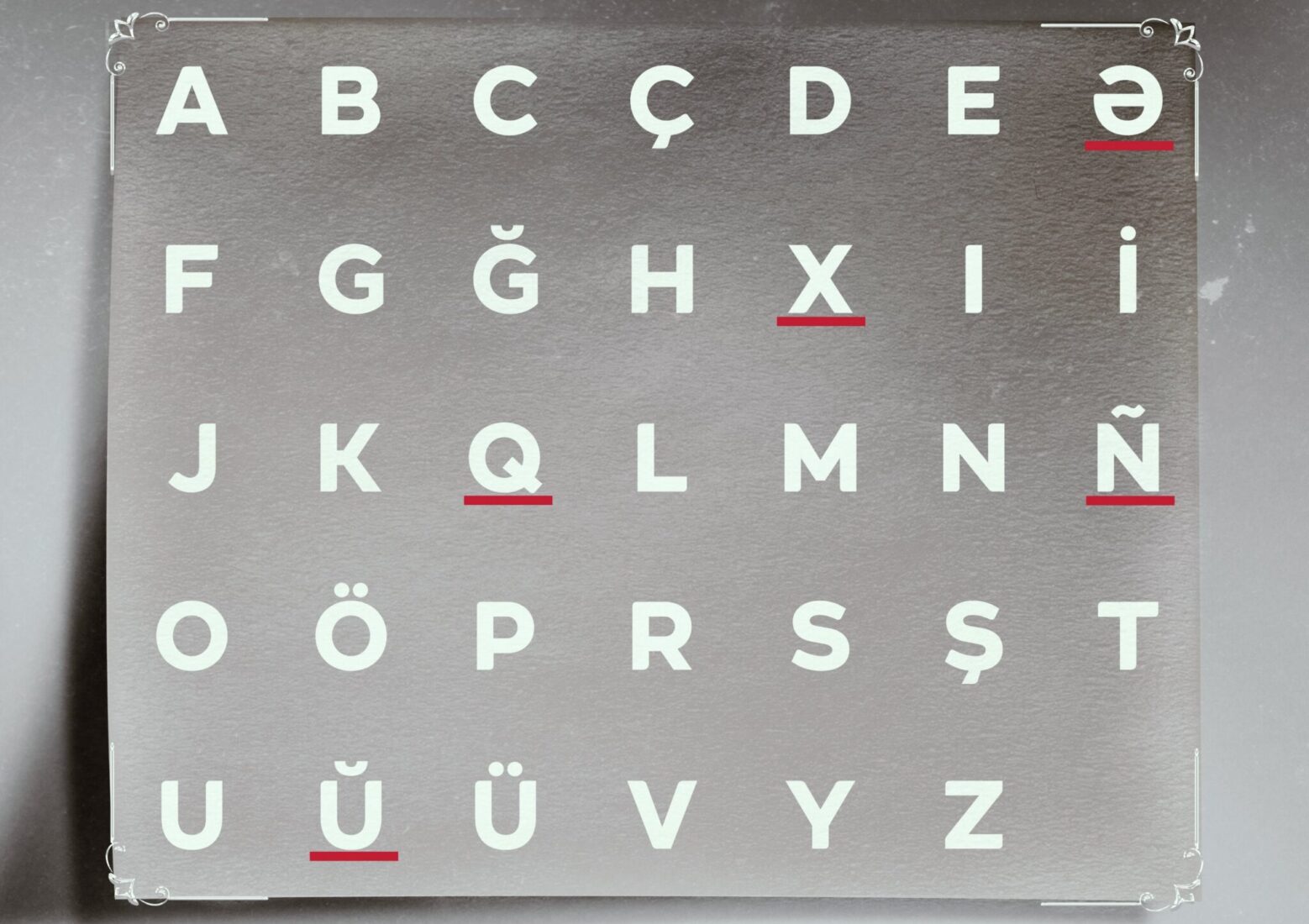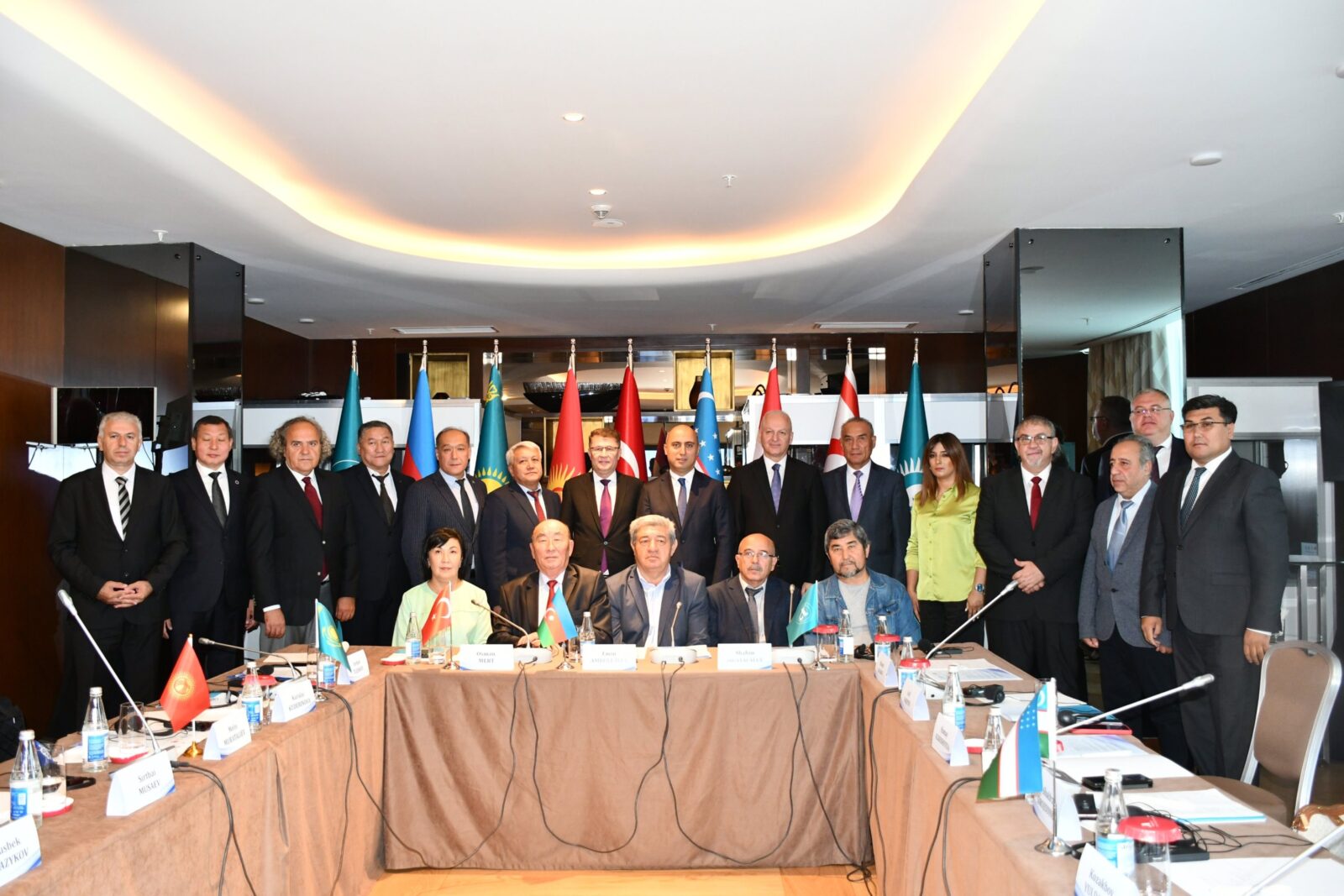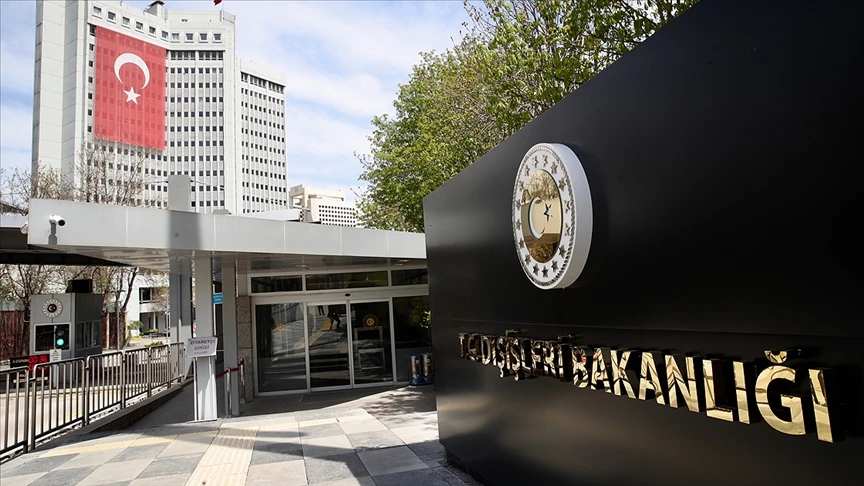Will Türkiye change its alphabet?
 Flags of the observer and participating countries and the Common Turkic Alphabet, November 7, 2024. (Photo via Tugce Atmaca/Türkiye Today)
Flags of the observer and participating countries and the Common Turkic Alphabet, November 7, 2024. (Photo via Tugce Atmaca/Türkiye Today)
President Recep Tayyip Erdogan’s recent speech at the 11th Summit of the Council of Heads of State of the Organization of Turkic States (OTS) in Bishkek emphasized the importance of unity among Turkic nations, heralding a new era he termed the “Century of the Turkic World.” Among the significant developments discussed was the adoption of a common Turkic alphabet, marking a historic milestone for cooperation across the Turkic-speaking world.
What does this step toward linguistic unity entail?
The idea of a unified Turkish alphabet is not a new one; it has been a long-standing vision dating back to 1926. Professor Osman Mert, President of the Turkish Language Association (TDK), detailed the efforts behind the creation of the Common Turkish Alphabet, underscoring the importance of accommodating the linguistic differences of various Turkic dialects. The OTS’s formation of the Turkic World Common Alphabet Commission has brought this vision closer to reality, with a series of meetings held in cities like Astana and Baku, gradually leading to consensus.
“Ortak Turk Alfabesi (Common Turkic Alphabet) has been a project that has been in our collective memory since 1926, waiting for the right time and conditions,” stated professor Mert.

The most recent agreements stem from the First Turkology Congress in Baku and the 1991 efforts at Marmara University, where a consensus on 34 letters was reached, though without official endorsement. A more concrete step was taken when the OTS, two years ago, officially formed the Turkic World Common Alphabet Commission.
What will this mean for Türkiye?
There will be no changes to Türkiye’s current alphabet. The 34-letter framework encompasses characters used by other Turkic countries such as Kazakhstan, Kyrgyzstan and Uzbekistan, but Türkiye will maintain its existing alphabet with its 29 shared letters. The common alphabet is designed as a framework alphabet, not a replacement for any OTS member state.
Professor Mert emphasized that the framework is not intended to replace national alphabets but to serve as a tool to unify Turkic languages. “It is not a single alphabet for any one dialect. It is a collection of letters used across all dialects, taking into account their unique phonetic characteristics.”
Key principles of common alphabet:
- Only meaningful sounds will be represented: A simplified approach to ensure efficiency in writing.
- Consistency in representation: The same sounds will be represented with the same symbols across all dialects.
- Incorporation of dialectal variations: The alphabet allows for the inclusion of unique sounds without compromising the unity of the script.
The common alphabet is meant to provide a structure where each dialect can continue to reflect its distinctiveness while enabling greater communication and understanding among Turkic nations.

Strengthening cultural, economic ties
Professor Mert stressed that the adoption of a unified alphabet is not merely a linguistic shift but a cultural and economic move toward closer integration. “This will help increase mutual understanding, foster cooperation, and strengthen ties across the Turkish-speaking world, from education to economics, politics, and literature.”
The common alphabet will make it easier for Turkish-speaking nations to communicate more effectively, promoting greater collaboration and shared prosperity across the region. As Professor Mert pointed out, “With a common writing system, countries will be able to read and write in each other’s dialects, making travel, trade, and diplomatic efforts smoother.”
Moving forward
While Türkiye’s alphabet will remain unchanged, the unified Turkic framework represents a crucial step in strengthening cultural ties and unity among Turkic-speaking nations. This move is expected to foster better cooperation from the Balkans to China, influencing education, economy, politics, and more.
As President Erdogan emphasized during the OTS summit, the unified Turkic alphabet is just one of the key steps toward a more integrated, prosperous, and influential Turkic world. The framework is a vital component of the broader ambition to strengthen relationships, particularly in areas like digital cooperation, economic resilience, and cultural preservation.
President Erdogan’s vision of a “Century of the Turkic World” is gradually becoming more tangible through initiatives like the common Turkic alphabet.
While Türkiye’s national alphabet will remain unchanged, the introduction of the common framework is set to deepen cooperation across the Turkic-speaking world, paving the way for closer ties, better understanding, and collective progress. The Turkic world’s journey toward linguistic unity is a powerful symbol of its growing strength and influence on the global stage.



